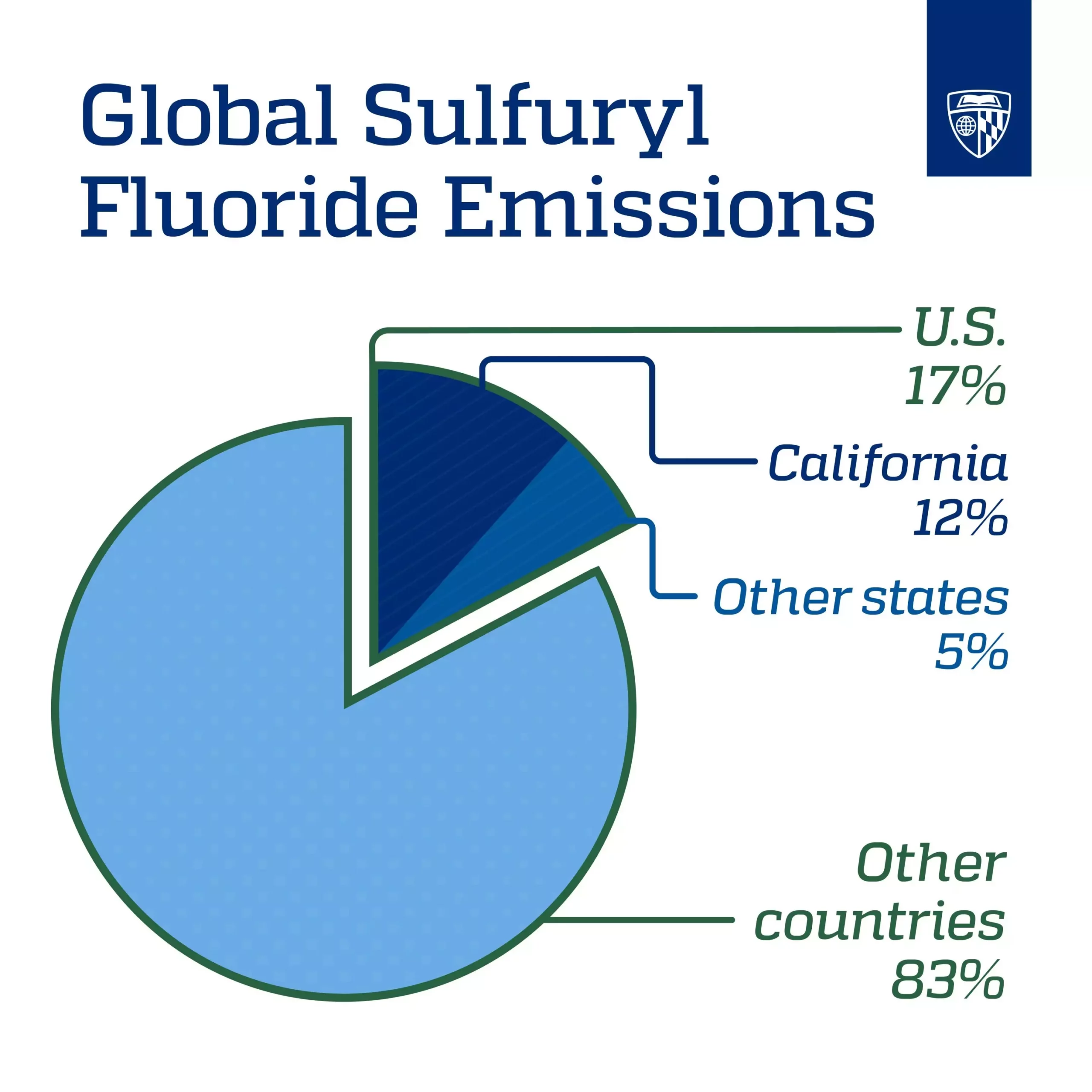California, a state typically praised for its progressive environmental policies, has found itself in an ironic position as the largest emitter of sulfuryl fluoride in the nation. Despite being a leader in reducing greenhouse gas emissions, particularly with a plan to achieve net-zero emissions by 2045, a recent study conducted by Johns Hopkins University has shed light on this surprising revelation.
Led by assistant professor Scot Miller and Ph.D. candidate Dylan Gaeta, the study involved an analysis of over 15,000 air samples collected between 2015 and 2019. By considering factors such as wind speed, direction, and other meteorological variables, the researchers were able to pinpoint the origins of sulfuryl fluoride emissions within the United States. These findings, published in Communications Earth & Environment, unveiled that a substantial portion of these emissions can be attributed to specific counties in California, predominantly Los Angeles, Orange, and San Diego counties.
Sulfuryl fluoride, initially approved as a pesticide in 1959 by the U.S. Environmental Protection Agency, gained popularity as a replacement for more detrimental fumigants that were contributing to ozone layer depletion. The practice of structural fumigation, which involves tenting infested buildings and subsequently venting the gas into the atmosphere, has been identified as a significant source of sulfuryl fluoride emissions in California. This method, along with agricultural and commodities fumigation, accounts for the majority of the state’s emissions.
While sulfuryl fluoride concentrations in the atmosphere may be low on average, its longevity poses a substantial threat. The gas can persist in the atmosphere for more than 40 years, contributing to global warming by trapping heat and reflecting it back to the Earth’s surface. Despite efforts to reduce greenhouse gas emissions primarily focusing on carbon, researchers emphasize the importance of addressing the risks associated with other gases like sulfuryl fluoride in combating climate change.
The researchers stress the need for a comprehensive inventory of greenhouse gases to facilitate the development of effective reduction strategies. By bringing attention to this overlooked contributor to global warming, the study aims to spur action and innovation in addressing sulfuryl fluoride emissions in California. Collaborating with environmental agencies like the California Air Resources Board and the Bay Area Air Quality Management District, the researchers hope to pave the way for more sustainable pest control practices and increased awareness of the environmental impacts associated with sulfuryl fluoride use.
The unveiling of California’s sulfuryl fluoride emissions issue serves as a critical reminder of the complex and interconnected nature of greenhouse gas emissions. By identifying and addressing such overlooked contributors, we can take significant strides towards a more sustainable and environmentally conscious future.



Leave a Reply